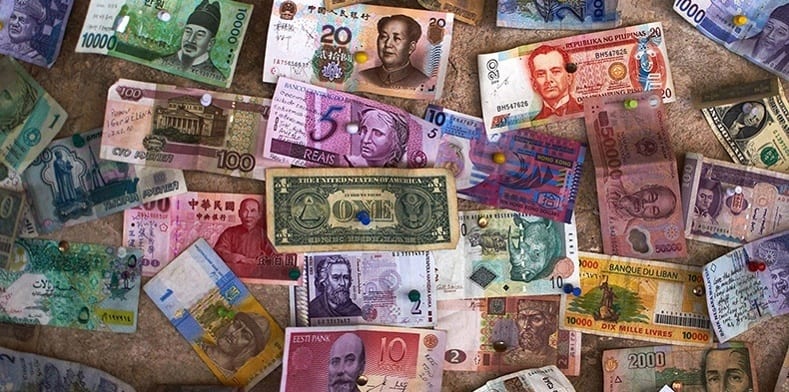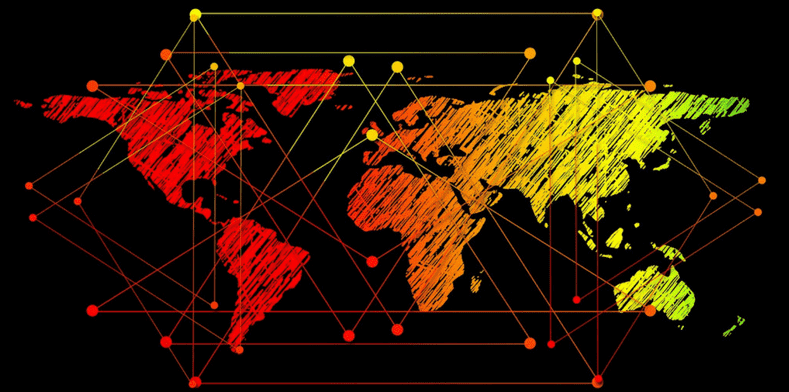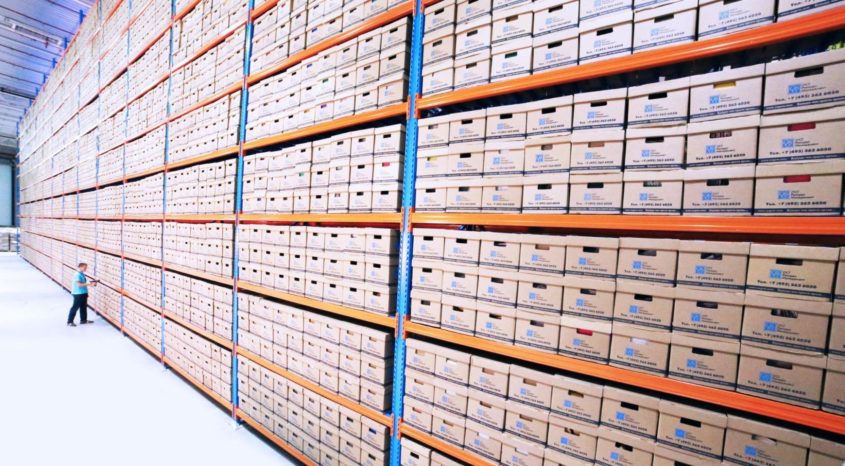Companies that choose to trade internationally become 34% more productive in the first year, whilst exporting businesses are 11% more likely to survive than those who don’t. Let’s face it, there’s no denying that international expansion is crucial for any growing retailer that is hoping to build a bigger brand.
In fact, some sources cite: “Growing global, thinking local is the most dominant theme in propelling future growth in the industry.” So with the retail industry expanding every year (including overseas sales), this article is aimed at helping you with your global expansion plans, plus some things to consider once you are selling internationally.
Why Expand Internationally?
There are a number of benefits you can expect to receive when entering international markets, including:
1. Advantageous economies of scale
Some retailers choose to expand into international markets in order to workaround the saturation in their local or national market. By expanding globally, you can take advantage of economies of scale and develop a known brand elsewhere. If you have a particularly niche business, you won’t be held back by market saturation, but if you sell a lot of similar items to others then this is where international expansion may be the best way for you to grow as a business.
2. Develops and enhances strategic partnerships
If you’re not quite ready to take foreign markets by storm alone, then developing and enhancing strategic partnerships with those who have already broken into the location you want to sell to will not only help you expand globally but will also give you a competitive advantage. The idea that you are able to advertise and market to a new following with less effort on your part could be enough to make the long-term investment of international growth seem worthwhile. Whilst good partnerships will always result in shared learning as well as business growth.
3. Different environments teach and inspire
When forced to try to sell to other markets, this may show design faults or improvements needed to your current products that you may never have thought of before. A new audience is able to feedback to you in ways that your usual audience may never do. A good example of this is when Procter and Gamble wanted to expand their Pampers Diapers brand into Japan. Initially the diapers were large and bulky, but the Japanese audience required diapers to fit into their smaller storage spaces that are in most Japanese homes. The reengineered, thinner diapers not only did well in Japan, but also made its way into all of P&G’s markets, including back home in the U.S.

Advice for International Expansion
Remember that expanding globally is a long-term business investment, with international markets rarely yielding short-term revenue and increased profits. Global expansion is not for everyone, and requires some in-depth research to validate the new market’s potential for your particular business and any risks you’ll need to take into account.
But if you find this is the best approach for you, read on for some advice on building an international empire, plus some things you’ll need to consider when using business management software.
1. Indirect vs Direct Exports
When deciding to expand globally, you will need to make a choice:
- Will you become an Indirect Export business and rely on brokers to ship, market and sell your goods overseas?
- Or will you become a Direct Export business and manage the process, directly handling all of the extra work (and profit) yourself?
If you’re unsure which is right for your business and the market you’re expanding into, there are lots of knowledgeable organizations around that you can turn to for advice, where you will be able to get advice on international trade in general, as well as trade activity for specific countries.
Companies you can seek advice from include:
- Your Bank: Global expansion requires funding, which is why you will want to include your bank in your business plans as early on as you can. A good bank will employ experienced advisors you can talk to about your plans, and what they can offer you.
- Embassies: Often intent on bringing in more trade and revenue, Embassies are always willing to help retailers to expand into their country. Embassies are a great place to get advice on expanding into particular countries, including tax rules, trade regulations and any other important things you need to consider for selling in their country.
- Chambers of Commerce: Chambers of Commerce exist in most large countries and are there to help. Often, they will have workshops, meet and greets, blogs and guides all geared towards helping you with your expansion plans, plus expert advice for when you’ve already expanded.
- Local Business Advice Centers: You may find that a local business advice center exists in your region. Some of the best ones have a wealth of advice on global expansion, with some also offering free (and regular) workshops with experienced advisors to help you develop realistic export plans and international business strategies.
2. Strategic Partnerships
Successful global retailers often work with the right partners if they’re unable to reach their full overseas potential solo. This helps not only with the original entering into other markets, but will also help to push you ahead of competitors already selling to that market. You should ensure that you have an ecosystem around you of good resellers, partners, suppliers and traders intent on working with you to get your brand and products around the world.
Some great examples of seeing strategic partnerships in action include:
- Apple + China Mobile: One of the largest wireless networks in the world, China Mobile helped Apple to become the primary smartphone maker in China (a huge market!). Just one year after the partnership was announced, Apple moved past 5 local competitors that had previously dominated the market.
- Uber + Starwood Hotels & Resorts: Helping to strengthen Uber’s presence across 100 countries, Uber did well to secure a powerful working relationship with Starwood Hotels & Resorts. Members of Starwood’s loyalty program can link their points with their Uber account, earning them Starwood credits whenever they take an Uber ride. With 1,200 hotels across 100 countries, this is one partnership that is set to bring Uber loads more bang for their buck!
You may find that not all retailers need international partners when expanding overseas, particularly those within a niche market. However, Tom Moore, from International Operations at the U.S. Commercial Service believes strategic partnerships are crucial, stating: “Partners can help facilitate sales, while keeping costs down for the home office. Forming a partnership takes time – often, a year or longer – and requires plenty of due diligence to find the right fit. The U.S. Commercial Service offers a matchmaking service to help U.S. businesses find appropriate international partnerships abroad.”
3. Product & Brand Localization
When expanding overseas, you’ll need to put some serious thought into what products you will sell. Re-wrapping your current items rarely works, unless you know that your popular, niche product is missing in that overseas market.
Typically, you will need to localize your products, the value proposition behind them and advertising to ensure you become a market leader in the new territory. Some things to consider include:
- Brand Localization: Sometimes, your brand name may not translate well into other languages, yet changing your brand name without compromising on brand identity can be a challenge. You’ll likely need to employ linguistic experts to help with a brand name transition to ensure that either your current name or new one (if needed) is grammatically and culturally correct, whilst still being catchy. To give yourself a couple of laughs, think back to when Coca Cola launched in China. If they kept that brand name in place, the translation of ko-kä-kö-la meant something like ‘bite a wax tadpole.” Not good.
- Product Prices: To meet local market needs (and adjust well to exchange rate fluctuations), you will likely need to rethink your product pricing strategies ready for global sales. Thus, you’ll need to do some thorough research to ensure the new pricing reflects well on your profits.
- Distribution & Logistics: Logistics and distribution infrastructure vary around the world. For instance, in India, major corporations like Coke and Nestle have to use non-traditional channels of distribution in order to reach the vast majority of Indian nationals residing in small towns and villages. In order to get your goods in front of consumers, you will need to heavily research how that country operates and fit in with their processes and practices.
4. Global-First Business Culture
A final point to consider for now is how important your international strategies should be to the success of your business. Your team and colleagues will need to be 100% behind your new business venture so that you can develop a global-first culture.
This ensures everyone within the company displays a globally-minded attitude, which inevitably affects business processes. Thus, global expansion becomes a strong driver of your business’ growth and future.
By hiring someone who can drive international strategy forwards, you ensure that you get buy-in across the company. But when an effort to globalize a business becomes decentralized or has no clear owner, all moving parts struggle to coordinate.
Things to Consider with Retail Management Software
As can be expected, when you expand globally, you need to ensure your retail management software can keep up. Here are a few things you’ll need your software to support and make possible in your business:
Landed Costs
If you intend on selling your products overseas, your new branch on the other side will need to bring those goods into your new market, thus, you’ll need to keep an eye on Landed Costs. These are costs like freight, insurance and import duty, from where the item began its journey up to the final destination.
You’ll need to ensure your software can account for these costs at the right time, and split them out across your items in the way that you want. For instance, if you ship a container of t-shirts out, which also has some space inside for jewelry, you will want to associate different costs to those items. The t-shirts may take up more space than the jewelry, so volume is one way to split the costs. Whereas, the jewelry may be more expensive to insure as the value of the items is worth more, thus, you may wish to apportion more of the costs to the jewelry than the t-shirts. You can also split costs based on quantity and item weight.
The decision on how to split out the landed costs should be your choice. Thus, your software will need to not only allow you to account for landed costs easily, but also let you decide how each order should be accounted for.
EC Sales Reporting
If you’re VAT-registered in the UK and supply goods to customers in another EU country, you must tell the HRMC about those overseas sales. This is where an EC Sales List (ESL) comes in, and helps you to show:
- Customer details for each of the EU customers buying from you
- The value of the goods sent to them
- The customer’s country code
Ideally, your software will compile this report automatically for you, or at the very least, allow you to obtain the necessary information you need to send to the tax authorities.
Intrastat Reporting
When moving goods across the EU, if you’re a VAT-registered business, you must show the total value of goods moved on your VAT return.
There are also additional reports called Supplementary Declarations (SDs) that you will also need to provide if you reach the annual thresholds for either arrivals or dispatches.
By allowing you to record custom information against your products, such as Commodity Codes, you can easily create Intrastat Reports in Brightpearl to help with your VAT return. For a full breakdown of exactly how this works, take a look at this knowledgebase article.
Multi Currency Banking
As can be expected, if you’re going to take money overseas, you’ll want to open bank accounts in those countries. Your retail management software should allow you to both buy and sell in those currencies, and allow you to setup foreign currency bank accounts.
Tax Reporting
A final consideration to take into account is of course the varying tax rules across the UK, EU and U.S. states. Your software should allow you to create different tax codes and percentages to use against orders, but you will also need to know the rules and regulations yourself too. We have a wealth of information on this topic, which you can find below:
- Selling Goods Online? Here’s What you Need to Know About International VAT
- Selling on Amazon: A Retailer’s Guide to European VAT
- A Retailer’s Guide to International Trade VAT Implications
- Sales Tax Guide for Omnichannel Sellers
- Sales Tax on Shipping Charges in the U.S., Demystified
- Secrets to Global Growth: The Financial Considerations
Planning to expand globally is a big decision to make, but one that can certainly reap its benefits when done right. I hope this article has helped you on the way to taking a larger slice of the retail pie elsewhere in the world! Have I missed anything? Let me know in the comments section below…
Need more tips for international expansion? There are some great nuggets of advice in this video and related article!





